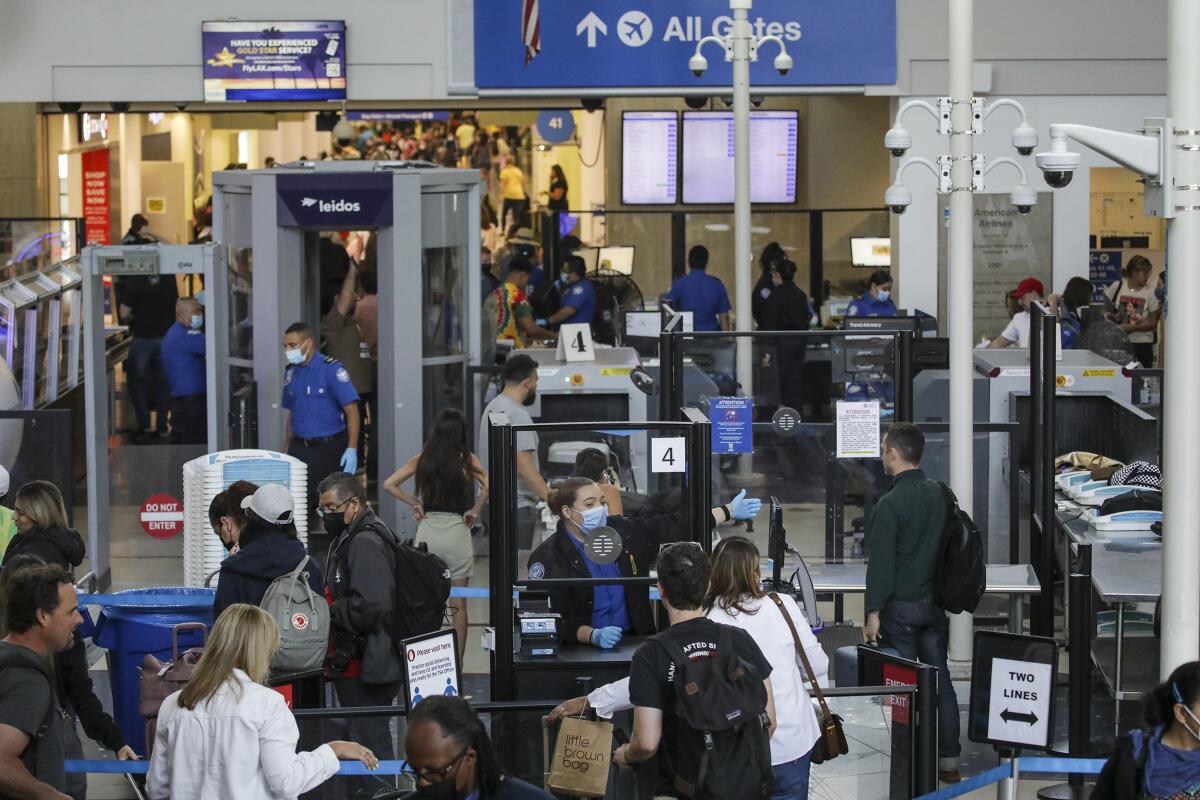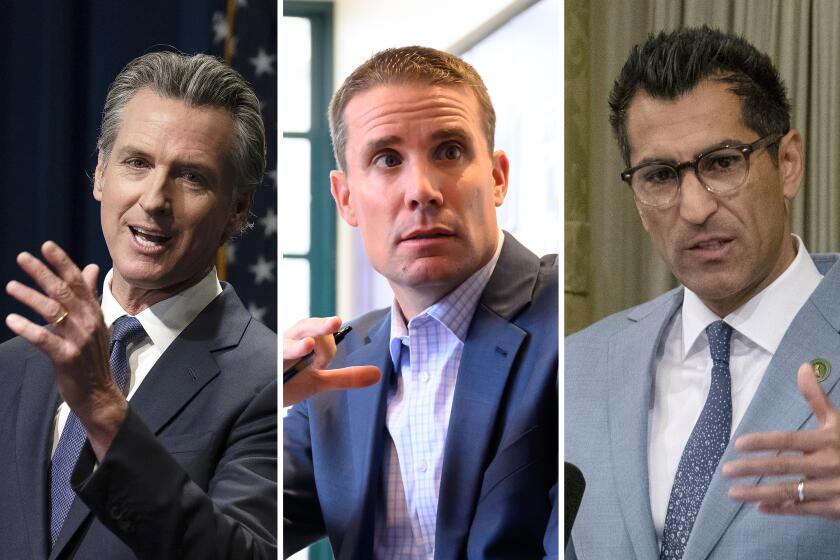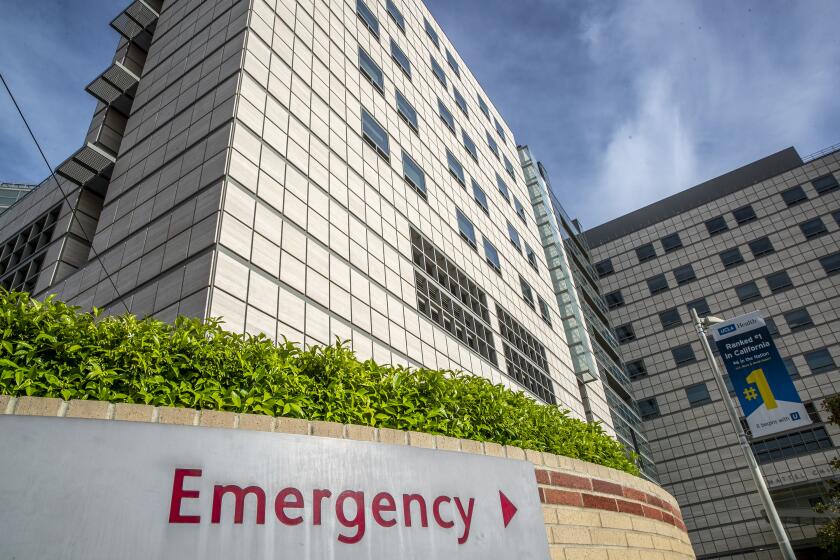Trump policies affect travel around California and the U.S.

- Share via
In the wake of multiple plane crashes, and amid erratic federal policies and denials and detentions at border crossings, summer travel in the U.S. is in an uneasy state.
The Golden State is seeing a decline in tourism as international visits are expected to drop 9.2% throughout the year, with international spending anticipated to drop 4.2%, according to a forecast published last month by state tourism organization Visit California and Tourism Economics.
Earlier this spring, the desert towns of Coachella Valley — a favorite destination for Canadian snowbirds — braced for a major financial blow as residents of the Great White North canceled flights, ditched hotel and Airbnb reservations and put their stateside second homes up for sale, citing President Trump’s aggression toward Canada.
Now that summer is almost here, my colleague Michael Wilner breaks down some of the travel disruptions that have given U.S. officials and industry experts pause, concerned with the economic consequences of a slower summer season.
National park cuts could affect visitor experiences
At the start of the year, thousands of seasonal park workers were told they wouldn’t be hired in the spring. After public outcry, Trump ditched the effort a month later.
But more than 700 park service employees did accept buyouts, leaving fewer workers to collect entrance fees, clean toilets or help with search-and-rescue efforts.
Cassidy Jones, senior visitation program manager at the National Parks Conservation Assn., told Michael that cuts to the parks are tangible and will directly affect visitors’ experience over the coming months, despite efforts by leadership at the Department of the Interior to paper over the cracks.
“There may be fewer entrance gates open,” Jones said. “People should plan ahead and remember to be helpful park visitors. Take the optional shuttle. Come with supplies with you, as some facilities may be closed at hours you’re not expecting, because they don’t have the staff to keep them open. Toilets may not be unwinterized yet if they’re in cold places.”
In April, Interior Secretary Doug Burgum issued an order directing that national parks be “open and accessible” through the summer season, as fears grew that staffing cuts implemented by the administration could become apparent.
Still, the White House cuts and hiring freezes severely disrupted a seasonal hiring and training cadence for park rangers that usually begins around Christmas, Jones said.
Travelers should expect flight disruptions
The Department of Government Efficiency under Trump eliminated hundreds of positions at the National Oceanic and Atmospheric Administration, or NOAA, including at the National Weather Service, and is proposing a 25% cut in the agency’s budget.
As a result, flight delays will be felt by travelers sooner rather than later, said Rick Spinrad, who served as administrator of NOAA under President Biden.
“In the short term, this summer, when people are doing longer traveling, we may see a degradation of services,” Spinrad said. “You may see more delayed flights, more weather-impacted flights.”
But Spinrad’s concern is that the cuts to NOAA soon will be felt more deeply at the local level, among the emergency managers, local transportation departments and public health centers that count on reliable forecasts to map out their work.
All is not lost, however.
The state can’t rely on welcoming people from other states and countries right now, but as Visit California notes, the Golden State’s 40 million residents are also important contributors to the state’s tourism economy.
Now is the perfect time for Californians to explore their own backyard and travel in state.
You're reading the Essential California newsletter
The most important California stories and recommendations in your inbox every morning.
You may occasionally receive promotional content from the Los Angeles Times.
Today’s top stories

Two people died in a Baldwin Park shootout, including an officer
- A young Baldwin Park police officer who loved the Dodgers and was an avid snowboarder was killed in a shooting late Saturday that also left a civilian dead and another officer injured.
- The identities of the male suspect accused of firing at the officers and the civilian man found shot to death near the shooting were not released as of Sunday afternoon.
- The suspect was also wounded but was listed as stable Sunday afternoon.
A transgender track athlete wins gold in California state championships despite Trump threats
- AB Hernandez’s success at the 2025 California Interscholastic Federation’s State Track and Field Championships in Clovis came amid high heat — with temperatures above 100 degrees for much of the day — and under an intense spotlight.
- Earlier last week, Trump said on social media that he was “ordering local authorities, if necessary, to not allow” Hernandez to compete, wrongly alleging she had won “everything” in a prior meet and calling her “practically unbeatable.”
Damaged engines didn’t affect Palisades firefight. But they point to a larger problem
- Then-Los Angeles Fire Department Chief Kristin Crowley cited broken fire engines, and a lack of mechanics to fix them, as a reason fire officials didn’t dispatch more personnel to fire-prone areas before the Palisades fire erupted.
- A Times review of engine work orders showed that many of the broken engines had been out of service for many months or even years. The LAFD had dozens of other engines that could have been staffed and deployed in advance of the fire.
Phonics could solve California’s reading crisis
- After decades of debate over how to teach reading amid stubbornly low test scores, a new bill aims to use phonics to solve the state’s literacy crisis.
- Gov. Gavin Newsom has pledged his support, setting aside $200 million to fund teacher training on the new approach in the May revise of his 2025-26 budget proposal.
- California has long struggled with reading scores below the national average. In 2024, only 29% of California’s fourth-graders scored “proficient” or better on reading on the National Assessment of Educational Progress.
What else is going on
- The U.S. just radically changed its COVID vaccine recommendations: How will it affect you?
- California Democrats try to figure out how to win national elections again.
- After half a century, California legislators are on the verge of overhauling a landmark environmental law.
- Wayfarers Chapel may have a new site in Rancho Palos Verdes.
- Loretta Swit, who played Maj. “Hot Lips” Houlihan on “MASH,” has died at 87.
- There’s one bright spot for San Francisco’s office space market.
- Here’s what Lester Holt told Tom Llamas before handing over “NBC Nightly News.”
Commentary and opinions
- In his quest for cultural dominance, Trump threatens what makes America great, writes culture critic Mary McNamara.
- Columnist Steve Lopez asks: If people taking care of our elders get deported, will anyone take their place?
- In Trump’s version of law and order, judges are demonized and criminals released, writes columnist Jackie Calmes.
This morning’s must reads
Cesar Galan belonged to a violent Los Angeles street gang. Then a shooting changed the way he saw the world and led him to the priesthood.
Other must reads
- Neighbors got goats to clear a fire-prone hill up “absolutely bonkers” roads. But, the herder said, it doesn’t pencil out.
- Here’s what this tiny restaurant in Australia reveals about L.A.’s Korean dining scene.
For your downtime
Going out
- Restaurants: Here are the best places to eat and drink this month, according to our food writers.
- Theater: Patrick Ball goes from “The Pitt” to “Hamlet”: A twisty take on Shakespeare comes to the L.A. stage.
Staying in
- Books: Here are 10 books to read in June, including literary fiction about a parent’s blurry past and Manhattan diaries from the Reagan era.
- Gardening: 13 showstopping native plants bring riotous color to your garden.
- Television: 5 dystopian TV shows to watch — and how they create their terrifying worlds.
- Recipes: Here’s a recipe for sesame-crusted feta.
- ✏️ Get our free daily crossword puzzle, sudoku, word search and arcade games.
And finally ... your photo of the day

Today’s great photo is from Times photojournalism intern Luke Johnson, who was at Angel Stadium for a Savannah Bananas game for which tickets cost more than a Dodgers-Yankees rematch.
Have a great day, from the Essential California team
Kevinisha Walker, multiplatform editor
Andrew Campa, Sunday writer
Karim Doumar, head of newsletters
How can we make this newsletter more useful? Send comments to essentialcalifornia@latimes.com. Check our top stories, topics and the latest articles on latimes.com.
Sign up for Essential California
The most important California stories and recommendations in your inbox every morning.
You may occasionally receive promotional content from the Los Angeles Times.









